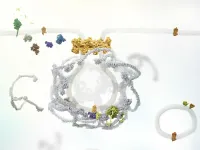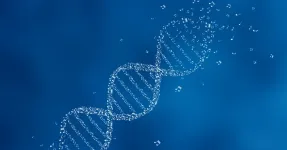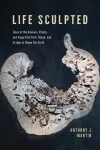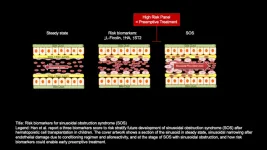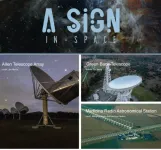(Press-News.org) Altering the chemical properties of an anti-nausea drug enables it to enter an interior compartment of the cell and provide long-lasting pain relief, according to a new study led by researchers at NYU College of Dentistry’s Pain Research Center.
The study, published in the Proceedings of the National Academy of Sciences (PNAS), illustrates how pain signaling occurs inside cells rather than at the surface, highlighting the need for drugs that can reach receptors within cells.
G protein-coupled receptors (GPCRs) are a large family of proteins that regulate many processes in the body and are the target of one third of clinically used drugs. A subset of these receptors plays an important role in pain, including the neurokinin-1 (NK1) receptor, which is activated by a pain-transmitting neuropeptide called substance P.
Several FDA-approved drugs that target the NK1 receptor are used to prevent nausea and vomiting associated with chemotherapy or surgery. Scientists previously hoped that the NK1 receptor would be a promising target for treating pain—but drugs targeting the receptor failed to control pain in clinical trials in the 1990s and early 2000s.
One reason why drugs targeting the NK1 receptor may not have been effective against pain is that most drugs block receptors at the surface of cells. However, researchers at the NYU Pain Research Center have shown that GCPRs signal pain not from the surface of cells, but from compartments inside the cell called endosomes.
“Sustained signaling in endosomes is necessary for the hyperexcitability of pain-sensing neurons involved in chronic pain,” said Nigel Bunnett, professor and chair of the Department of Molecular Pathobiology at NYU College of Dentistry and the study’s senior author. “As a result, treating pain may require the development of drugs that penetrate cells, are retained in endosomes, and disrupt signaling inside the cell.”
In the PNAS study, the researchers focused on two drugs, aprepitant and netupitant, both NK1 receptor antagonists used to prevent nausea and vomiting. Studying NK1 receptors in the lab has the benefit of clinically available drugs that target the receptor, but also comes with challenges, as there are large differences between the NK1 receptor in mice and humans. To overcome this, the researchers genetically modified mice to express the human NK1 receptor.
Bunnett and his colleagues had previously shown that encapsulating aprepitant in nanoparticles could deliver the drug to endosomes to block pain, but in this study, aprepitant only briefly disrupted endosomal signaling in cellular studies and stopped pain in mice for short periods.
Modifying the second drug, netupitant, held much more promise. The researchers changed the chemical properties of the drug to make it more capable of penetrating a cell’s lipid membrane. They also altered the charge on the molecule within an acidic environment so that once the drug entered the acidic environment of an endosome, it would stay trapped inside and accumulate.
These changes allowed the modified netupitant to readily penetrate cells to reach the endosome and block signaling of the NK1 receptor in endosomes with a much more prolonged effect in cells. The altered netupitant also had a more potent and long-lasting analgesic effect in mice than aprepitant and the regular form of netupitant.
In another experiment, the researchers studied mice with a different type of NK1 receptor on the outer membrane of the cell, rather than inside. These mice were more resistant to pain than those with human NK1 receptors inside the cell, illustrating the importance of endosomes in signaling pain and the need for treatments that can penetrate cells.
The researchers are continuing this research and other studies in animal models to develop new therapies for pain that block GCPRs in endosomes.
“Although we focused on the neurokinin-1 receptor, our findings are likely applicable to many G-protein coupled receptors because many of them show sustained signaling within cells, and therefore require drugs that can enter cells and block the receptors in endosomes,” said Bunnett.
Additional study authors include Alan Hegron, Chloe J. Peach, Raquel Tonello, Shavonne Teng, Rocco Latorre, Dane D. Jensen, Alex R. B. Thomsen, and Brian L. Schmidt of NYU College of Dentistry; Philipp Seemann, Harald Huebner, Dorothee Weikert, and Peter Gmeiner of Friedrich-Alexander Universität Erlangen-Nürnberg in Germany; and Jeanette Rientjes, Nicholas A. Veldhuis, Daniel P. Poole, and Wendy L. Imlach of Monash University in Australia.
The research was supported by the National Institutes of Health (NS102722, DE026806, DK118971, DE029951), the U.S. Department of Defense (W81XWH1810431, W81XWH2210239), the National Health and Medical Research Council (NHMRC APP1125877, APP1139586) and the Australian Research Council (ARC DP190102854). Bunnett is a founding scientist of Endosome Therapeutics Inc. Research in Bunnett’s laboratory is funded, in part, by Takeda Pharmaceuticals International.
About NYU College of Dentistry
Founded in 1865, New York University College of Dentistry (NYU Dentistry) is the third oldest and the largest dental school in the US, educating nearly 10 percent of the nation’s dentists. NYU Dentistry has a significant global reach with a highly diverse student body. Visit dental.nyu.edu for more.
END
Researchers modify drug to enter cells and treat pain
Altered version of anti-nausea drug netupitant reaches inside cells to disrupt signaling and provide sustained pain relief
2023-05-22
ELSE PRESS RELEASES FROM THIS DATE:
Ozone treaty is delaying first ice-free Arctic summer
2023-05-22
A 1987 global deal to protect the ozone layer is delaying the first ice-free Arctic summer by up to 15 years, new research shows.
The Montreal Protocol – the first treaty to be ratified by every United Nations country – regulates nearly 100 man-made chemicals called ozone-depleting substances (ODSs).
While the main aim was to preserve the ozone layer, ODSs are also potent greenhouse gases, so the deal has slowed global warming.
The new study shows the effects of this include delaying the first ice-free ...
Montreal protocol is delaying first ice-free Arctic summer
2023-05-22
New York, NY—May 22, 2023—When scientists discovered a hole over Antarctica in 1985, countries across the globe got together and wrote a treaty designed to protect the ozone layer, which shields the Earth--and us--from harmful levels of ultraviolet radiation. The resulting Montreal Protocol, the only United Nations treaty ratified by every country in the world, was signed in 1987 and entered into effect in 1989, when little was known about its impact on the global climate. Its purpose was to reduce atmospheric concentrations of ozone-depleting substances (ODSs), materials ...
Targeting Phage Therapy World Congress will bring Phage Therapy up to another level with more than 70 communications
2023-05-22
The 6th World Congress on Targeting Phage Therapy 2023, being held on June 1-2 in Paris, will include more than 70 communications highlighting the most recent advances in phage and phage therapy.
150+ attendees will gather to discuss the future potential of phage therapy. The most strategic question to discuss is: “how to bring phage therapy up to a new level?”.
Targeting Phages 2023 will address how phages play a strategic role to combat infection and antibiotic resistance. A special session ...
A brand new, shiny CAR design
2023-05-22
Immunotherapy is rapidly becoming a well-founded form of cancer treatment as it employs and strengthens a patient’s immune system to attack tumors.
Chimeric antigen receptor (CAR) T cells – genetically altered T cells used in immunotherapy that can locate and destroy cancer cells – show great promise. Yet they still struggle in broader applications, particularly in attacking non-tumor cells and persistence in killing tumor cells.
Natasa Miskov-Zivanov, principal investigator and assistant professor of electrical and computer engineering at the University of Pittsburgh Swanson School of Engineering, received a $299,986 EAGER ...
A new map reveals the complicated world in which cells seek to repair damaged DNA
2023-05-22
Writing in the May 22, 2023 issue of Cell Systems, a diverse team of scientists, led by researchers at University of California San Diego School of Medicine, have produced a novel map that depicts the human body’s enormously complicated and highly evolved system for addressing and repairing DNA damage — a cause and consequence of many diseases.
Damage to DNA and replication errors caused by stress and other factors play a major role in disease, and are a hallmark of cancer and other afflictions. To maintain the ...
What constitutes a paradigm shift? An olive shrub’s mating system as a case study of Kuhn’s theory
2023-05-22
Philosopher Thomas Kuhn’s influential theory of how scientific knowledge is built introduced the term “paradigm shift” to explain a transformation of a field’s ideas and methods. “A Paradigm Shift, or a Paradigm Adjustment? The Evolution of the Oleaceae Mating System as a Small-Scale Kuhnian Case Study,” a new paper published in The Quarterly Review of Biology, seeks to apply this analytical framework to a small controversy in population biology: the mating system of the shrub Phillyrea angustifolia.
Traditional theory states that the sex ratio of a population should be 1:1 male to female (or ...
New book eyes Earth's excavators, from microbes to elephants and dinosaurs
2023-05-22
The ordinary person looks at Georgia’s Stone Mountain and sees a solid, unmovable monolith. Emory University paleontologist Anthony Martin, who thinks in geologic time, sees something more akin to a giant sugar cube.
Ever since the crystalized mass of igneous-born minerals rose from deep underground, pushed by the upwelling of magma that formed the Blue Ridge Mountains around 350 million years ago, the giant rock’s flanks have faced continuous assault — and not just from weather and water.
Stone Mountain “is fighting a battle against life, and life is winning,” Martin writes ...
Does hydrocortisone improve treatment of septic shock?
2023-05-22
Sepsis is a global health priority affecting 55 million patients worldwide and causing 11 million deaths annually. Treatment for sepsis may include prompt recognition, source control, antibiotics, fluids, vasopressors, and adjunctive therapies. Corticosteroids have been evaluated as adjunctive therapy for septic shock for more than 50 years. Despite this substantive body of research, uncertainty persists about the effects of corticosteroids on mortality.
In a study publishing May 22, 2023 in the New England Journal of Medicine: ...
Risk biomarkers could predict serious side effect of stem cell transplant
2023-05-22
Doctors are one step closer to having a risk biomarker to alert them to which of their pediatric stem cell transplant patients are likely to experience a potentially deadly side effect called sinusoidal obstruction syndrome (SOS).
A team led by MUSC Hollings Cancer Center researcher Sophie Paczesny, M.D., Ph.D., published the results of its biomarker study in JCI Insight this month.
There is a drug, defibrotide, approved to treat SOS. Paczesny hopes the results of the biomarker study will encourage defibrotide’s manufacturer to conduct a multicenter clinical trial testing ...
First Contact: Global team simulates message from extraterrestrial intelligence to Earth
2023-05-22
First Contact: Global team simulates message from extraterrestrial intelligence to Earth
A Sign in Space imagines how Earth might respond to a signal from aliens and invites the public to help decode an ET message.
May 22, 2023, Mountain View, CA – What would happen if we received a message from an extraterrestrial civilization? Daniela de Paulis, an established interdisciplinary artist and licensed radio operator who currently serves as Artist in Residence at the SETI Institute and the Green Bank Observatory, has brought ...
LAST 30 PRESS RELEASES:
Autistic and non-autistic faces may “speak a different language” when expressing emotion
No clear evidence that cannabis-based medicines relieve chronic nerve pain
Pioneering second-order nonlinear vibrational nanoscopy for interfacial molecular systems beyond the diffraction limit
Bottleneck in hydrogen distribution jeopardises billions in clean energy
Lung cancer death rates among women in Europe are finally levelling off
Scientists trace microplastics in fertilizer from fields to the beach
The Lancet Obstetrics, Gynecology, & Women’s Health: Taking paracetamol during pregnancy does not increase risk of autism, ADHD or intellectual disabilities, confirms new gold-standard evidence review
Taking paracetamol during pregnancy does not increase risk of autism, ADHD or intellectual disabilities
Harm reduction vending machines in New York State expand access to overdose treatment and drug test strips, UB studies confirm
University of Phoenix releases white paper on Credit for Prior Learning as a catalyst for internal mobility and retention
Canada losing track of salmon health as climate and industrial threats mount
Molecular sieve-confined Pt-FeOx catalysts achieve highly efficient reversible hydrogen cycle of methylcyclohexane-toluene
Investment in farm productivity tools key to reducing greenhouse gas
New review highlights electrochemical pathways to recover uranium from wastewater and seawater
Hidden pollutants in shale gas development raise environmental concerns, new review finds
Discarded cigarette butts transformed into high performance energy storage materials
Researchers highlight role of alternative RNA splicing in schizophrenia
NTU Singapore scientists find new way to disarm antibiotic-resistant bacteria and restore healing in chronic wounds
Research suggests nationwide racial bias in media reporting on gun violence
Revealing the cell’s nanocourier at work
Health impacts of nursing home staffing
Public views about opioid overdose and people with opioid use disorder
Age-related changes in sperm DNA may play a role in autism risk
Ambitious model fails to explain near-death experiences, experts say
Multifaceted effects of inward foreign direct investment on new venture creation
Exploring mutations that spontaneously switch on a key brain cell receptor
Two-step genome editing enables the creation of full-length humanized mouse models
Pusan National University researchers develop light-activated tissue adhesive patch for rapid, watertight neurosurgical sealing
Study finds so-called super agers tend to have at least two key genetic advantages
Brain stimulation device cleared for ADHD in the US is overall safe but ineffective
[Press-News.org] Researchers modify drug to enter cells and treat painAltered version of anti-nausea drug netupitant reaches inside cells to disrupt signaling and provide sustained pain relief
